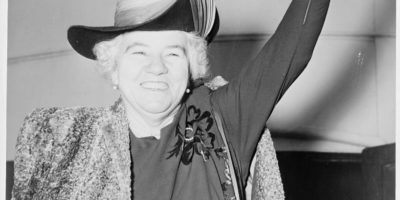
Image: Trier. By CTHOE. Wikimedia Commons
Top 10 Facts about Trier
Trier previously referred to in English as Trèves and Triers, is a city on the banks of the Moselle in Germany. It lies in a valley between low plant-covered slopes of red sandstone in the west of the province of Rhineland-Palatinate, close to the boundary with Luxembourg and inside the significant Moselle wine district.
Established by the Celts in the late fourth century BC as Treuorum and vanquished 300 years after the fact by the Romans, who renamed it Augusta Treverorum (“The City of Augustus among the Treveri”), Trier is viewed as Germany’s most seasoned city. It is likewise the most established seat of a diocesan north of the Alps. Trier was one of the four capitals of the Roman Domain during the Tetrarchy time frame in the late third and mid-fourth hundred years.
In Medieval times, the diocese supervisor balloter of Trier was a powerful sovereign of the Congregation who controlled land from the French boundary to the Rhine. The diocese supervisor balloter of Trier likewise had incredible importance as one of the seven voters of the Sacred Roman Domain. As a result of its importance during the Roman and Blessed Roman realms, a few landmarks and church buildings inside Trier are recorded as UNESCO World Legacy Site.
This article examines the best ten facts about Trier in Germany.
1. The Rome of the north
After the appearance of the Romans around 17 BC and the foundation of a super durable city, Trier was immediately created to turn into a Roman town. The vast number of all-around safeguarded Roman landmarks here is unmatched north of the Alps and has procured Trier the moniker ‘Rome of the north. The antiquated remainders, including the great Porta Nigra entryway, can be visited today.
2. There are various UNESCO locales
A visit through Trier will take you past an incredible eight UNESCO World Legacy Destinations – the previously mentioned Roman locales all have UNESCO World Legacy status. As well as the Porta Nigra entryway, Constantine’s royal chamber, the supreme bathhouses, the Roman scaffold, and a theater are dispersed across the city. However, that is not I – Trier is additionally known for its house of prayer and thirteenth century Church of Our Woman (Liebfrauenkirche), Germany’s most established Gothic church.
3. The middle age town focus must be seen to be believed

Image: Christmas market in Trier. By Berthold Werner. Wikimedia Commons
The city center revolves around Hauptmarkt, the city’s most significant market square. The court is enclosed by very much safeguarded condos that make a blended cityscape of Renaissance, Rococo, Classicist, and late Historicist design disregarded by the pinnacle of St. Gangolf’s Congregation. The red fifteenth-century Stripe building is another eyecatcher in this vivid blend.
4. It’s Karl Marx’s origin
In 1818 the socialist progressive Karl Marx was brought into the world in Trier. His origin remains in Brückengasse 10 and has been changed into a gallery that portrays his initial life in Germany, his unique ideas and their impact on the course of history as of not long ago, and his time in banishment in London, where he died at 64 years old.
5. Its house of prayer is the most seasoned in Germany

Image: Trier cathedral. By Berthold Werner. Wikimedia Commons
Trier Church alone is a sufficient motivation to visit. With over 1,700 years of history added to its repertoire, it’s the most established in the country. The building blend of Gothic, Florid, and Romanesque components verifies the house of God’s long history. However, the depository is likewise worth a visit. It shows an impressive assortment of strict craftsmanship tracing back to the late relic.
6. Luxembourg is nearby
Trier is a simple 15 kilometers (9.3 miles) from the Luxembourg line and a conspicuous decision if you extravagant a side excursion to another European country. A 50-minute train ride takes you to Luxembourg City, which flaunts a fabulous castle, lovely chapels, and verifiable landmarks that will effortlessly fill a day of touring. Improve the outing with a cut of the conventional Deutschen tart (plum tart) and on the off chance that that is sufficiently not, make a point to load up on certain baked goods at Oberweis before you head back.
7. Wining and eating is a joy
The Mosel stream doesn’t simply give Trier beautiful perspectives, yet additionally, with the absolute best white wines you’ll track down in Germany. The lofty slopes of the valley are clad with terraced grape plantations, which generally develop Riesling grapes. An outing to Trier is incomplete, a matching of grant-winning white wines and provincial culinary specialties. One of the downtown area’s top locations for wine samplings is Weinstube Kesselstatt.
8. It is home to the Place of the Three Magi
Assuming you walk around Simeonstrasse, one structure makes sure to grab your attention. Worked around 1230, even before the development of Trier’s middle-age city wall was finished, the Place of the Three Magi (Dreikoenigenhaus) was involved by a rich and presumably compelling family. In those days, the fundamental access to the house was situated on the primary floor and must be arrived at by a stepping stool that could be pulled up to keep unwanted visitors from entering.
9. The previous Jewish quarter is captivating

Image: Moselstadium, Trier. By Stefan Kühn. Wikimedia Commons
Hints of a Jewish people group in Trier date back to the relic and can be visited today. Directed visits take you to memorable destinations, like a previous bathhouse and the half-wooded places of Jew’s Rear entryway (Judengasse), which once denoted the focal point of the local area. In 1418, the Jewish people group was removed from the city and just got back in 1600, after which families then, at that point, spread out across the city.
10. There are heartfelt waterway sees
Open-air fans ought to investigate the climbing trails that navigate the area around Trier. The three significant ways show the names Saar-Hunsrück-Steig, Eifelsteig, and Moselsteig and cover the features of an all-encompassing valley that sees forested regions, heartfelt streams, and social sights. Most courses start with the traveler data focus.
Trier makes them stagger waterfront vistas across the two sides of the Mosel waterway. However, it merits taking a little voyage to wander past the city borders. Ancient towns, palace relics, and beautiful grape plantations overwhelm the area and hold vast potential outcomes to investigate some Germans in unexpected locations.
This article features the central ten facts about Trier in Germany. I trust it has been valuable and persuasive to make that outing to Germany to see these fantastic sites.
Planning a trip to Paris ? Get ready !
These are Amazon’s best-selling travel products that you may need for coming to Paris.
Bookstore
- The best travel book : Rick Steves – Paris 2023 – Learn more here
- Fodor’s Paris 2024 – Learn more here
Travel Gear
- Venture Pal Lightweight Backpack – Learn more here
- Samsonite Winfield 2 28″ Luggage – Learn more here
- Swig Savvy’s Stainless Steel Insulated Water Bottle – Learn more here
Check Amazon’s best-seller list for the most popular travel accessories. We sometimes read this list just to find out what new travel products people are buying.










